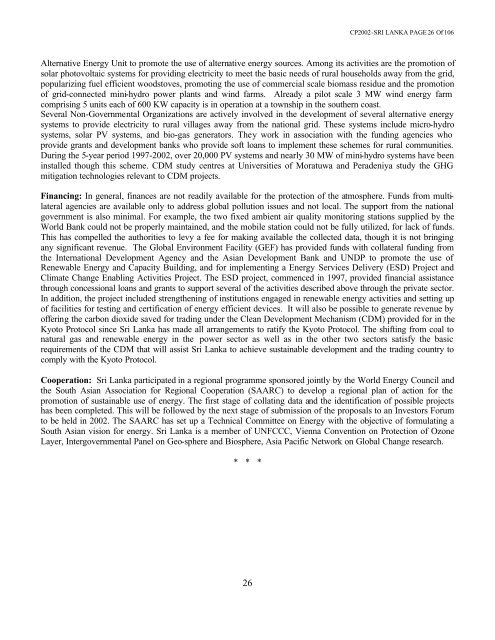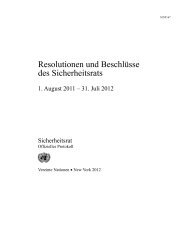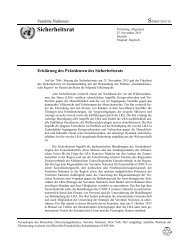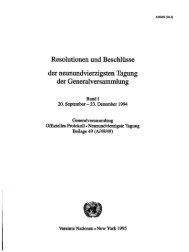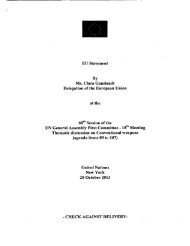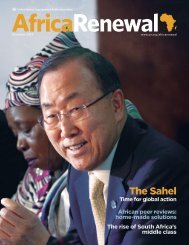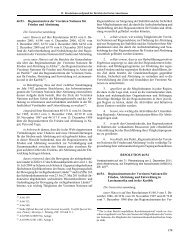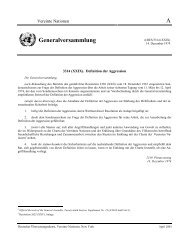SRI LANKA COUNTRY PROFILE
SRI LANKA COUNTRY PROFILE
SRI LANKA COUNTRY PROFILE
Create successful ePaper yourself
Turn your PDF publications into a flip-book with our unique Google optimized e-Paper software.
26<br />
CP2002-<strong>SRI</strong> <strong>LANKA</strong> PAGE 26 Of 106<br />
Alternative Energy Unit to promote the use of alternative energy sources. Among its activities are the promotion of<br />
solar photovoltaic systems for providing electricity to meet the basic needs of rural households away from the grid,<br />
popularizing fuel efficient woodstoves, promoting the use of commercial scale biomass residue and the promotion<br />
of grid-connected mini-hydro power plants and wind farms. Already a pilot scale 3 MW wind energy farm<br />
comprising 5 units each of 600 KW capacity is in operation at a township in the southern coast.<br />
Several Non-Governmental Organizations are actively involved in the development of several alternative energy<br />
systems to provide electricity to rural villages away from the national grid. These systems include micro-hydro<br />
systems, solar PV systems, and bio-gas generators. They work in association with the funding agencies who<br />
provide grants and development banks who provide soft loans to implement these schemes for rural communities.<br />
During the 5-year period 1997-2002, over 20,000 PV systems and nearly 30 MW of mini-hydro systems have been<br />
installed though this scheme. CDM study centres at Universities of Moratuwa and Peradeniya study the GHG<br />
mitigation technologies relevant to CDM projects.<br />
Financing: In general, finances are not readily available for the protection of the atmosphere. Funds from multilateral<br />
agencies are available only to address global pollution issues and not local. The support from the national<br />
government is also minimal. For example, the two fixed ambient air quality monitoring stations supplied by the<br />
World Bank could not be properly maintained, and the mobile station could not be fully utilized, for lack of funds.<br />
This has compelled the authorities to levy a fee for making available the collected data, though it is not bringing<br />
any significant revenue. The Global Environment Facility (GEF) has provided funds with collateral funding from<br />
the International Development Agency and the Asian Development Bank and UNDP to promote the use of<br />
Renewable Energy and Capacity Building, and for implementing a Energy Services Delivery (ESD) Project and<br />
Climate Change Enabling Activities Project. The ESD project, commenced in 1997, provided financial assistance<br />
through concessional loans and grants to support several of the activities described above through the private sector.<br />
In addition, the project included strengthening of institutions engaged in renewable energy activities and setting up<br />
of facilities for testing and certification of energy efficient devices. It will also be possible to generate revenue by<br />
offering the carbon dioxide saved for trading under the Clean Development Mechanism (CDM) provided for in the<br />
Kyoto Protocol since Sri Lanka has made all arrangements to ratify the Kyoto Protocol. The shifting from coal to<br />
natural gas and renewable energy in the power sector as well as in the other two sectors satisfy the basic<br />
requirements of the CDM that will assist Sri Lanka to achieve sustainable development and the trading country to<br />
comply with the Kyoto Protocol.<br />
Cooperation: Sri Lanka participated in a regional programme sponsored jointly by the World Energy Council and<br />
the South Asian Association for Regional Cooperation (SAARC) to develop a regional plan of action for the<br />
promotion of sustainable use of energy. The first stage of collating data and the identification of possible projects<br />
has been completed. This will be followed by the next stage of submission of the proposals to an Investors Forum<br />
to be held in 2002. The SAARC has set up a Technical Committee on Energy with the objective of formulating a<br />
South Asian vision for energy. Sri Lanka is a member of UNFCCC, Vienna Convention on Protection of Ozone<br />
Layer, Intergovernmental Panel on Geo-sphere and Biosphere, Asia Pacific Network on Global Change research.<br />
* * *


